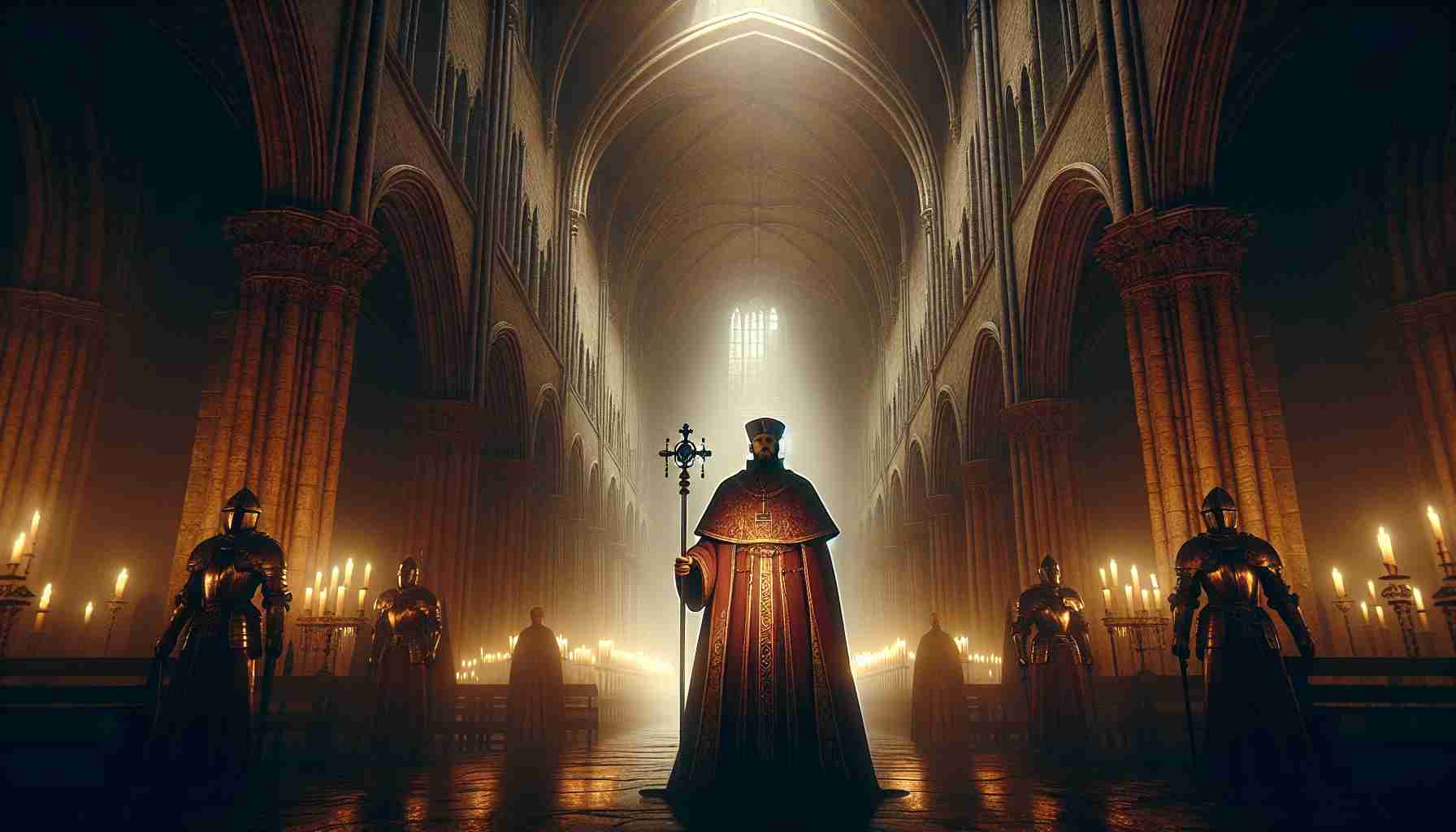

Rain lashed against the cold stone of Canterbury Cathedral as twilight descended on the evening of December 29th, 1170. Wind howled through the cloisters like lamenting souls, making banners tremble and iron torches hiss. Inside, candlelight flickered over timeworn columns and the vaulted ceiling soared like a ship’s hull turned heavenward. The holy place, consecrated in solemn devotion, now braced itself for an act of unholy vengeance.
Thomas Becket, Archbishop of Canterbury, stood in the dim nave, his vestments a contrast to the cold grey stone—rich crimson and gold that shimmered faintly in the candlelight. He had just concluded Vespers, his voice rising with quiet strength as he read from the Gospel. Around him, the monks shuffled toward the choir, voices still echoing prayers into the rising storm. But Becket remained still near the steps leading to the altar, his fingers wrapped around the carved crook of his pastoral staff.
Somewhere outside, hooves struck flagstones. Metal clanked—four armed men dismounted. FitzUrse, de Morville, Brito, and le Breton. Knights of King Henry II, crossing the threshold not in pilgrimage but pursuit.
Three years had passed since Thomas had returned from his exile in France, after a bitter quarrel with the king. Once friends, fellow sons of ambition and strategy, their alliance had fractured over a question as old as the kingdom itself: Whose authority stood higher—Christ’s or the crown’s?
Thomas had answered with iron resolve: “It is God’s right to judge His clergy, not the king’s.”
Hebrews had foretold such a cost: “They were put to death by the sword… the world was not worthy of them.” (Hebrews 11:37-38)
The knights strode through the cathedral, boots loud on the flagstones. Their swords clanked against their mail shirts. Becket heard them before he saw them. His attendants urged him to flee—to one of the many crypts below, or hide in the sacristy—but he raised a hand and said evenly, “God’s house must not be made a fortress. Let them come.”
The murderers appeared in the archway. Their faces were flushed, their breaths misting in the icy air. Sir Reginald FitzUrse stepped forward.
“Where is Thomas the traitor?” he spat.
“I am Thomas, archbishop,” came the calm reply. “Not a traitor—but a priest of God.”
What followed unfolded not with the frenzy of passion but the precision of duty. A sword was drawn, then another. Monks cried out. One rushed forward, only to be flung aside.
The first blow struck Thomas on the head, splitting his skull’s crown. He did not cry out. Another cut his arm as he tried to shield his face. The third drove him to his knees before the altar.
“Into Thy hands, O Lord,” he whispered.
The final strike cast him lifeless onto the cold stone floor. His blood spilled beneath the altar, soaking the earth of Canterbury—earth that would soon be said to heal the sick, to cleanse souls.
When news reached the continent, kings wept and commoners wept more. Pilgrims began crawling their way to the site, some on bleeding knees, to pray beside his tomb. Miracles were claimed. Blind men saw. The lame rose and walked. In three years, Rome canonized him a saint.
Yet even after Rome claimed him, many in England whispered another tale—that Becket, knowing the knights would come, had chosen not simply to die but to die there, before the altar in God’s house, giving his blood not just for justice, but for a throne higher than any king’s. They claimed that as the sword fell, his face bore neither fear nor pain, only peace.
The cathedral never forgot.
His shrine rose behind the high altar, adorned with gold, gemstones, and flanked with candles that never ceased to burn. Its glow drew pilgrims from across Christendom. Geoffrey Chaucer’s Canterbury Tales told of travelers making sacred journey to honor him. So many visitors passed through that worn grooves remain in the flagstone to this day, testaments to centuries of reverence.
Centuries later, during Henry VIII’s dissolution of the monasteries, Becket’s shrine was shattered. Gold and bone stolen, the martyr’s name struck from official prayer. But people still came, whispering, praying. Some dreamed still of miracles.
And the stones remembered.
Each December 29th, when the wind gathers in the nave and the candles flicker in the same rhythm as ages past, the monks still chant Vespers. They begin where Thomas left off. The echoes climb the stone like incense. And on this day, always, the faithful remember not how an archbishop fell, but why.
He died not in rebellion, but obedience—to a church higher than kings, to a calling deeper than politics, to a Savior crucified by the state. For those who watched that crimson pool beneath the altar spread like a holy wound across the floor, Becket’s defiance became deliverance.
The stone remains where he fell. Damaged but not erased.
And the cathedral—his cathedral—sings still.